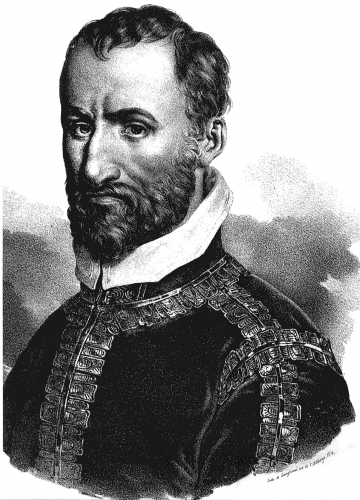Giovanni Pierluigi da Palestrina
Posted by Richard Rawlinson
We sometimes differentiate between religious and secular music at funerals, hymns such as Abide with Me or popular hits such as Candle in the Wind. It was ever thus with music’s capacity to move, ranging, even in the Middle Ages, from sacred Gregorian Chant to itinerant troubadours with their songs about love in all its permutations of joy and pain.
Perhaps surprisingly, many early composers famous for sacred music also produced beautiful secular music. In the 14th century, Guillaume de Machaut, a priest at Rheims Cathedral, was perhaps the first pop star of the Western world, celebrated for both his religious compositions and secular ballads about courtly romance. The Dylan of his day, his poetry was known throughout Europe, attracting fans including Geoffrey Chaucer.
Machaut was the first composer to create a polyphonic setting of the Ordinary of the Catholic Mass (the Ordinary being those parts of the liturgy that don’t change, including the Kyrie, Gloria, Credo, Sanctus, and Agnus Dei). This new polyphonic style caught on, paving the way for the flowering of choral music in the Renaissance.
You can see (or hear) why below. Compared with the earlier order cialis pills monophonic Gregorian Chant—which though sublime can get a bit samey with its single melody—polyphonic music offers multiple melodies and voices. They’re at odds and yet harmonious. The result is ego-free, the lack of standout solo adding to the celestial quality.
n>
Now here’s an example of Machaut’s secular work.
Fast forward to the 16th century and the Renaissance genius who more than anyone established polyphonic choral music as fine art at its most glorious and spiritually inspiring: Giovanni Pierluigi de Palestrina, musical director at the Vatican who also leant his talent to secular madrigals.
Palestrina’s Pope Marcellus Mass continues to inspire divine worship all around the world today. It irks me that so many music lovers talk as if polyphony began with 18th century Baroque. Even if Bach is among my personal favourites, he’s certainly inspired by Palestrina, the Prince of Music.
Listen below to how different melodies and voices swirl around each other like playful-yet-pure angels before soaring heavenwards. Volume up, eyes closed, a trance-like state as close as it gets to any mortal’s understanding of being with God:
And here’s one of Palestrina’s charming madrigals:



Now that’s what I call a really useful (and delightful) posting, thanks Richard. People who jump straight to the Baroque in their listening to vocal polyphony are missing out on our very own Thomas Tallis, his astonishing “Spem in alium.” I played this a while back to a friend, a genial atheist, who had never heard it (or indeed this sort of polyphony) before; he almost panicked. “What’s happening? What’s going on? I’ve never heard anything like that, how…” etc. I think your Holy Spirit was maybe getting to him…. Call It what you wish, there’s a lot of It… Read more »
Gloria I’m delighted you love Tallis as well as, I hope, Palestrina (youtube videos 3 and 4). The earlier Machaut, though almost comically Gothic to us, was advanced at the time, but Palestrina and Tallis transcend centuries and fashion. They give the world beautiful, truly spiritual music, whether one is theist or otherwise. My line of thought at the moment, influenced by what I read here, is modernism was brutalist denial post-modernism is beginning to embrace its possibilities, whether it manifests itself in new age, agnostic or organised religion. An encouraging trend. Music, including Tallis and Palestrina, inspire at least… Read more »
Good word in this context, “transcendent.” OED tells me it comes from “trans-” across and “scandere” to climb. Such music enables us to climb over our usual concerns, anxieties, wants etc to find – what? Doesn’t perhaps matter what, that’s a matter of belief. It’s the climbing that counts, getting to a place beyond shopping lists and arthritis. Interesting how many musicians insist on a non-verbal approach to their music. It wasn’t Beethoven who called his sonata “Moonlight.” Miles Davis refused to introduce his numbers when playing in even the most prestigious of clubs, saying that if you had to… Read more »
[…] was while writing about Medieval music here that my thoughts turned mechancholic about the loss of Isabella Blow, the fashionista who […]